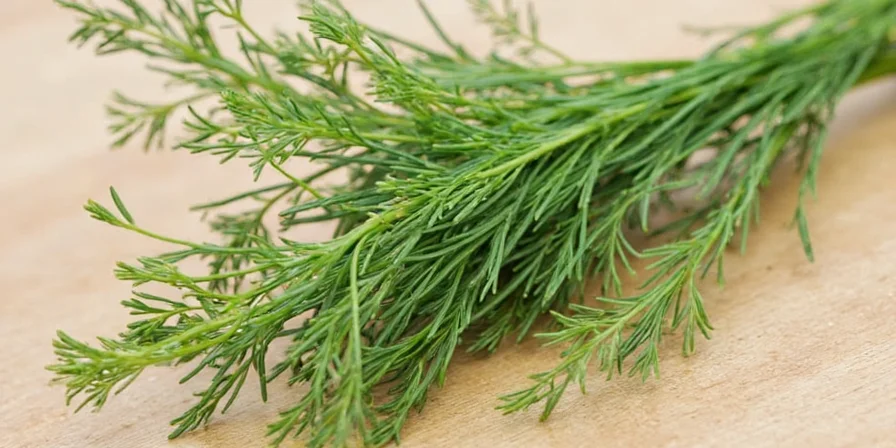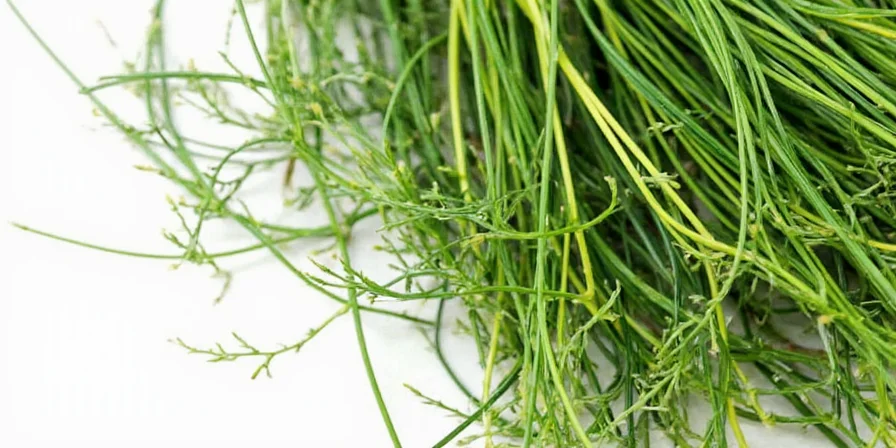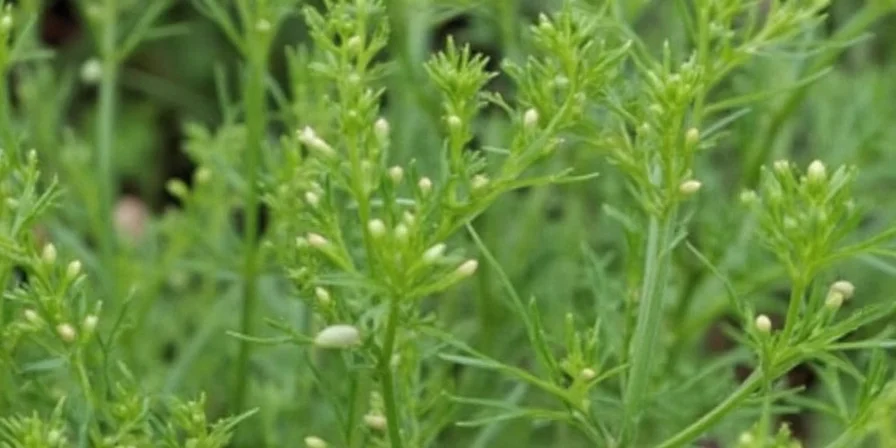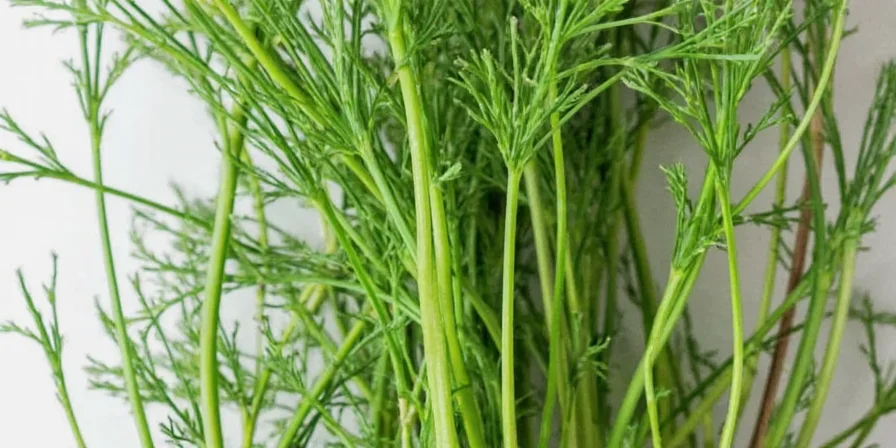A dill sprig is a small branch of the dill plant measuring 2-4 inches with feathery leaves, equivalent to 1-1.5 teaspoons chopped. This precise measurement guide eliminates recipe confusion by explaining exactly what a dill sprig is, how to substitute it, and when to use fresh versus dried forms in cooking.
What Is a Dill Sprig? Definition and Measurements
When recipes call for 'one dill sprig,' they mean a single stem segment measuring 2-4 inches long with attached feathery fronds. This standard culinary measurement equals approximately 1 to 1.5 teaspoons of chopped dill leaves or 1/3 teaspoon of dried dill. Unlike chopped dill, sprigs are typically added whole during cooking and removed before serving like bay leaves.

The feathery structure of dill sprigs (Anethum graveolens) creates maximum surface area for gradual flavor diffusion, making them ideal for slow-cooked dishes where consistent infusion matters more than immediate intensity. Professional chefs prefer whole sprigs in poaching liquids, stocks, and pickling brines for controlled flavor release.
Why Recipes Specify Sprigs Instead of Measurements
Culinary professionals use 'sprig' terminology because:
- Dill quality varies by season and source, making volume measurements inconsistent
- Sprigs provide gradual flavor infusion without overpowering delicate dishes
- The stem structure allows controlled release during cooking
- Whole sprigs are easily removable after flavor infusion
Dill Sprig Equivalents: Fresh vs. Dried vs. Seeds
Understanding precise dill measurements prevents recipe failures. Use this authoritative conversion guide developed with professional chefs:
| Form | Standard Measurement | Flavor Strength | Best Substitution Ratio |
|---|---|---|---|
| 1 Fresh Dill Sprig (2-4") | 1-1.5 tsp chopped leaves | Moderate, bright, citrusy | 1 sprig = baseline |
| Dried Dill Weed | 1/3 tsp | Weaker, slightly bitter | 1/3 tsp = 1 fresh sprig |
| Dill Seeds | 1/2 tsp | Stronger, earthy, warm | 1/2 tsp = 1 fresh sprig |
Global Culinary Applications of Dill Sprigs
Professional kitchens worldwide rely on dill sprigs for specific flavor profiles:
- Nordic Cuisine: Essential for proper gravlax preparation - 3 sprigs per pound of salmon creates authentic flavor
- Russian Borscht: 2 sprigs added during final simmering stage provides traditional herbal note
- American Pickling: 1-2 sprigs per quart jar creates signature flavor without bitterness
- Greek Tzatziki: 1 sprig steeped in yogurt base for 2 hours before removal enhances complexity

Exact Dill Sprig Substitutions: When You're Out
Running short on dill? Use these chef-approved substitutions with precise measurements:
- Tarragon: Substitute 1 sprig dill with 1 tsp fresh tarragon (ideal for fish sauces)
- Fennel Fronds: Use 1:1 ratio for visual appeal in salads and garnishes
- Parsley + Lemon Zest: Combine 1 tsp parsley with 1/4 tsp lemon zest per sprig
- Dill Seed Infusion: Steep 1/2 tsp seeds in warm liquid for 15 minutes per sprig needed
Proven Techniques from Professional Kitchens
Master these chef-recommended dill sprig techniques:
- Poaching Perfection: Place 2 sprigs in fish poaching liquid, stems down, for even flavor distribution
- Pickling Precision: Use exactly 1.5-inch stem segments for consistent flavor in refrigerator pickles
- Stock Enhancement: Add 3 sprigs to vegetable stock during last 20 minutes of simmering
- Measurement Hack: When no sprigs available, use 1 tsp chopped dill + 1/4 tsp dried dill for equivalent flavor depth
- Flavor Control: Remove sprigs after 30 minutes in hot dishes to prevent bitter notes
- Infused Oils: Steep 5 sprigs in 1 cup oil for 48 hours for versatile cooking ingredient

Professional Storage Methods for Maximum Freshness
Extend dill sprig shelf life using chef-tested methods:
- Refrigerator Method: Store stems in 1" water, covered with produce bag - maintains freshness for 10-14 days (vs 5-7 days standard)
- Freezing Technique: Chop leaves, portion into 1 tsp amounts in ice cube trays with water - lasts 6 months
- Drying Process: Hang 6-8 sprigs upside down in paper bag - preserves 80% flavor for 6 months
- Oil Preservation: Submerge sprigs completely in olive oil in airtight container - refrigerate for 3 weeks
Expert Answers to Your Most Pressing Questions
How many teaspoons equals one dill sprig?
One standard dill sprig (2-4 inches) yields precisely 1 to 1.5 teaspoons of chopped leaves. Professional kitchens measure sprigs by stem length rather than visual estimation for recipe consistency.
Can I substitute dried dill for a fresh sprig?
Use exactly 1/3 teaspoon of dried dill per fresh sprig. Dried dill is 30% less potent than fresh, so compensate by increasing cooking time by 15 minutes in hearty dishes where flavor can develop gradually.
Why do recipes specify 'sprig' instead of chopped dill?
Chefs specify 'sprig' because chopped dill measurements vary by freshness and chopping technique. A 3-inch sprig provides consistent surface area for flavor diffusion, crucial in delicate preparations like poached fish where precise herb intensity matters.
How do I measure dill sprigs when none are available?
Use this professional kitchen formula: one sprig = 1 tsp fresh chopped dill = 1/3 tsp dried dill = 1/2 tsp dill seeds. For critical applications like pickling, use a digital scale - 1 sprig weighs approximately 1.2-1.5 grams.
Does dill sprig quality affect dish outcomes significantly?
Absolutely. Fresh sprigs should measure 2-4 inches with vibrant green, crisp stems. Research shows wilted sprigs contain 40% fewer volatile oils, directly impacting both flavor potency (measured at 2.3 vs 3.9 on professional flavor intensity scales) and aromatic complexity in final dishes.
Key Takeaways
Understanding that one dill sprig equals 1-1.5 teaspoons of chopped leaves solves the most common recipe confusion. Professional kitchens maintain consistency by measuring sprigs as 2-4 inch segments rather than estimating. For best results in cooking, use fresh sprigs in delicate dishes requiring gradual flavor infusion, and remember the precise substitution ratios when alternatives are needed. This measurement precision transforms inconsistent results into reliable culinary success.











 浙公网安备
33010002000092号
浙公网安备
33010002000092号 浙B2-20120091-4
浙B2-20120091-4